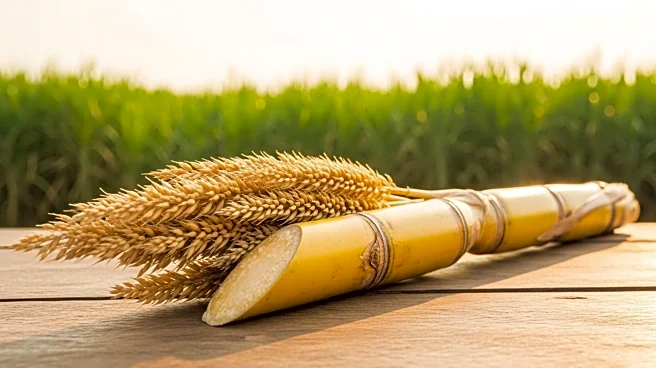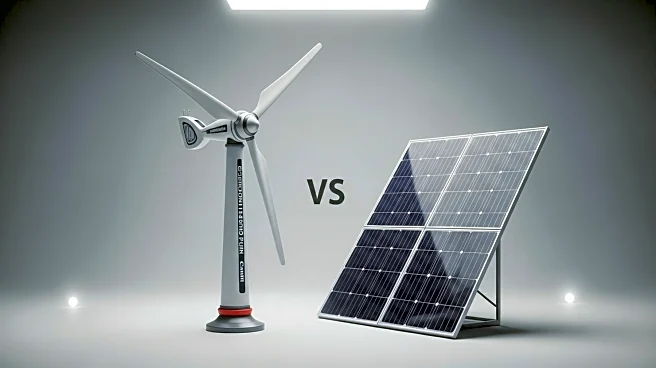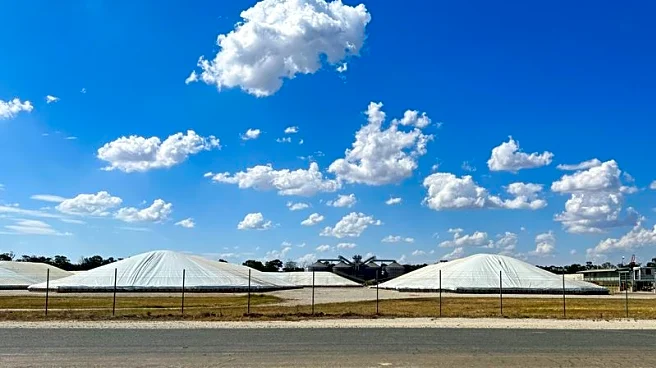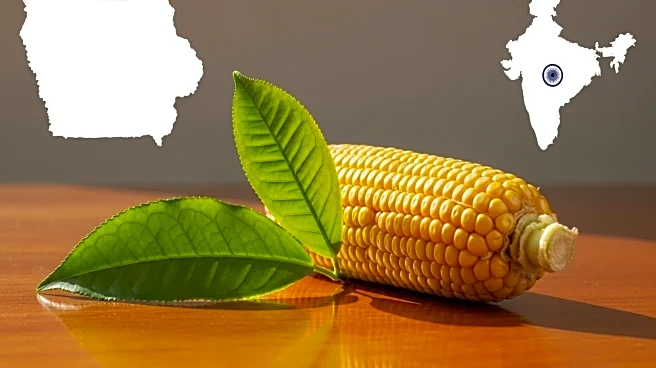What is the story about?
What's Happening?
India's sugar production is projected to reach 31 million tonnes in the 2025-26 season, according to Praful Vithalani, Chairman of the Jagjivan Keshavji group. The gross production is expected to be 36 million tonnes, allowing for 1 million tonnes to be exported while maintaining a higher closing stock of 6 million tonnes compared to the previous season's 4.5 million tonnes. The industry is also considering diverting 5 million tonnes towards ethanol production. At a recent event, the Indian Sugar and Bio-energy Manufacturers Association (ISMA) presented demands to the Food Minister, including a hike in the minimum selling price of sugar and an upward revision of ethanol prices.
Why It's Important?
The projected increase in sugar production is significant for India's agricultural and economic sectors. It suggests a stable supply that can support both domestic consumption and export opportunities, potentially boosting the economy. The demands for price hikes and ethanol production reflect the industry's efforts to protect farmers and stakeholders from market volatility. These developments could influence government policy decisions, impacting sugarcane farmers, consumers, and mills. The growth in sugar consumption, driven by end-use industries, highlights the sector's importance in India's economy.
What's Next?
The Agriculture Ministry is expected to release the first advance estimates of crop production, including sugarcane, in October. The Food Minister has assured that decisions will be made to safeguard the interests of farmers, consumers, and mills. The industry will continue to push for policy changes, including price adjustments and export permits, to ensure sustainable growth. Stakeholders will be watching for government responses to these demands, which could shape the future of the sugar industry in India.
Beyond the Headlines
The sugar industry's growth is influenced by health trends and diabetes awareness, affecting retail consumption. Institutional consumption remains dominant, driven by demand from beverages, ice cream, and confectionery sectors. The government's quota system and weather dependencies contribute to consumption volatility. The industry's focus on ethanol production aligns with global trends towards renewable energy sources, potentially reducing reliance on fossil fuels.
AI Generated Content
Do you find this article useful?















